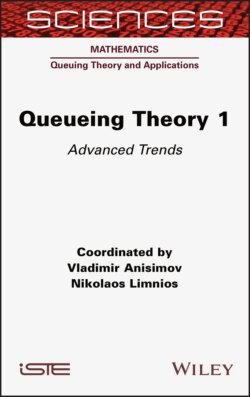Читать книгу Queueing Theory 1 - Nikolaos Limnios - Страница 25
1.5. Interdependent interarrival and service times
ОглавлениеChao (1995) discussed the case of bivariate exponential distributions for joint interarrival and service times queues and showed the waiting time is monotonically decreasing in the dependency in increasing convex ordering sense. sun and Basu (1995) introduced a class of bivariate geometric distribution originally presented by Hawkes (1972). Omey and Minkova (2013) presented a bivariate geometric distribution, which we extend to the general matrix structure. In what follows, we consider the case where the service and the interarrival times are interdependent and represented by a bivariate geometric distribution as in Omey and Minkova (2013).
Omey and Minkova (2013) consider a bivariate geometric distribution described by two random variables X (with two possible states S1, S2) and F · S1 is success of type 1 and S2 is success of type 2, and F is a failure. Let
where be defined as , then
It is straightforward to see that if r is fixed, then as p increases q decreases and vice versa. Hence, there is negative correlation between type 1 and type 2 successes in that case. Equally, if we say p is fixed, then q can be allowed to increase or decrease at the expense of r. These types of effects of interarrival and service times have not received much attention in queueing theory; . This makes sense as an increase in S1 leads to a decrease in S2 and vice versa.
